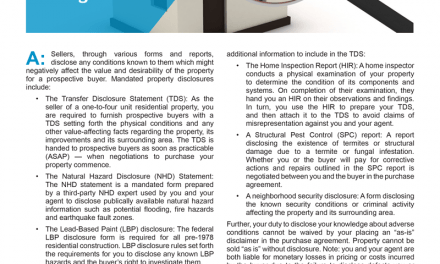The Making Home Affordable program created by the current administrated has made matters worse for homeowners and the economy.
Homeowners have been dragged along with lender’s extend-and-pretend temporary loan modifications, pouring money into loans that are ultimately foreclosed on by lenders. Money wasted in trial modifications would have been saved for moving expenses and rental deposits.
Additionally, most homeowners are unaware that requesting a modification (even if all payments have been current) will damage their credit for up to two years.
Modification programs are only delaying the pain of the desperately needed real estate owned (REO) market purge.
Banks have been abusing the temporary loan modifications as a tool to keep foreclosure losses and bad loans off their loss-accounting books.
This shadow inventory of eventual REOs coupled with the lender’s refusal to agree to short sales that would move property directly onto the market leads to prices inflated by artificial inventory scarcity.
All this conduct has the nasty side effect of encouraging builders and developers to create inventory for a market that is overly-inflated, speculator-driven and headed for another severe price depression.
While on the one hand, the Treasury Department assures the public that the Making Home Affordable is successful in providing needed relief, a new program called the Foreclosure Alternatives Program will provide incentives for lenders to accept short sales and deeds in lieu of foreclosure. As of mid-December, nearly 760,000 homeowners had received trial modifications and only 31,000 received permanent modifications. The Treasury Department’s goal is to see three to four million permanent modifications by 2012 — an unreasonable goal considering the miserable results of the Making Home Affordable program.
2008 saw more than 1.7 million Americans with delinquent payments lose their homes through foreclosures, short sales or deeds in lieu according to Moody’s Economy.com. Last year an additional two million U.S. homes became REO properties. Projections from Economy.com indicate that 2010 will be the worst year yet for foreclosures, with numbers reaching 2.4 million nationally.
The key piece missing from all of these foreclosure prevention plans? Cramdowns — a reduction of the principle balance on the loan. Without cramdowns, homeowners who have lost all equity with no hope of retrieving it for a decade or more have no incentive to stay in their underwater residences.
first tuesday take: Banks, like every other business trying to survive in this economic climate, are unconcerned with the plight of the American and the Californian homeowner. Banks are solely concerned with what affects their bottom line – which includes reporting (or not reporting) huge lost value in their mortgage portfolios.
Lenders are taking advantage of their current alliance with a government that fully backs extend-and-pretend modification practices. It serves their purpose to escape stating the market value of their mortgage loan portfolio, avoiding the financially devastating consequences of insolvency they can only avoid with the present mark-to-management pricing of their loan portfolio.
The federal government has invested taxpayer money in these lenders, and has no desire to force them to show their cards and foreclose on their shadow inventory, allowing transparency of value to shine in. Likewise, in its quest for job creation, the federal government wants to keep REO inventory off the market and is using subsidies to get the new home inventories out of the market in order to encourage new builders to continue building homes, a bow to a construction industry which stockpiled more new housing in the 2004 to 2006 period than will be needed for four or five years into the future.
The federal government needs to wake up and get out of bed with lenders and builders. Without judicial cramdowns incentivizing lender-originated principal reduction, the real estate market and the economy will double-dip within months after the tax credits end in April 2010. The Federal Reserve Bank will raise mortgage interest rates and the next wave of foreclosures will hit as ever more adjustable rate mortgages (ARMs) and modifications reset.
Brokers and agents must continue doing what they do best: set the values that properties are worth in this market in spite of seller resistance, and locate a match for buyers with properties that have equity and can actually close escrow. Remember that speculators will keep REO resales overpriced for months to come, but they stay involved at their own peril.
Re: “U.S. Loan Effort Is Seen as Adding to Housing Woes,” from The New York Times














The Gov’t is afraid of the possible free-fall of the bubble they created, with the encouragement of the citizens.
The people elected “feel gooders”, and they encouraged Fannie and Freddie to make untenable loans. Now, the politicos are afraid that if the people find out what they did, while trying to make the people happy, that the once happy people will turn on them(and they will), because the mob has no mind, only feelings.
A slow and steady unwind would be the best course of action. But with “the people” FEELING the need for action, we are very unlikely to get it.
And to Firoz Merchant: There are no victims. Home owners were spending equity, many Homebuyers were speculating (or have you forgotten?), lenders, real estate sales people, brokers, sellers, and buyers were all trying to make a buck. And the Tax payer, who will shoulder the burden, they elected the people who encouraged the mess.
In this ordeal only victims are homeowners, I have been in business for over 20 yeas,never seen such abuses by finacial industry for all kind of cosumers:home owners,smallbusinesses,credit cards & line of credit. Tax payor funds were used for benefits of financial institutions.
If the loan modifications and credit cards interest rate were frozen @ 2%or 3%, then
all these agony & suffering to consumers,city state,and local social agency could have been less burdensome. I hope that we never see these type of crisis ever again.
There should be judicial mandatory arbitration when modification or any financial settlement is denied, because any negotiations and denial of modifications comes without any explanation of financial disclosers by financial institutions and there guidlines. Institutions comes with new rules to justify the vage denial.
I see government intervention in many other ways affecting our housing market. HVCC is a travesty. It in no way is a positive. Appraisers, once on lenders lists are guaranteed to get paid even if they do a terrible job by using short sale listings which in no way describe current values or trends or stressed sales unless that is the norm for the area etc. the new HUD RESPA rules for disclosure has done nothing but confuse the issue even more. How can it be fair that bank loan officers don’t have to disclose rebate pricing and brokers do. that has only caused the crooks to go to work for banks.
Thank you for publishing this article. It’s nice to know that someone else sees this “quote” recovery, the same way I do!